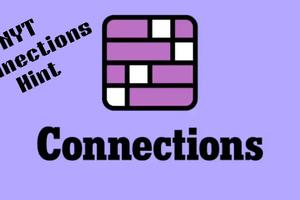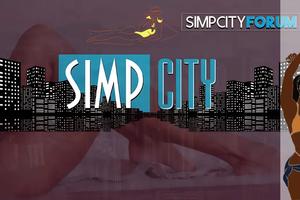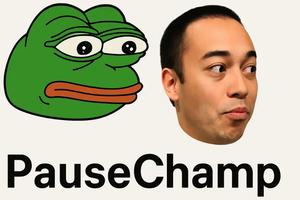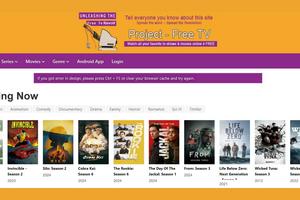PogChamp Emote Meaning: Origins, Controversy, and Cultural Impact

Key Takeaways
Essential insights to remember
The PogChamp emote originated from a 2010 video featuring Ryan "Gootecks" Gutierrez's surprised facial expression.
The term "PogChamp" comes from a 2011 promotional video where Gutierrez won a Pogs game and was called "Pog Champion."
In January 2021, Twitch removed the original PogChamp emote following controversial statements by Gutierrez regarding events at the U.S. Capitol.
After a rotating series of replacement emotes, Twitch permanently replaced PogChamp with "KomodoHype," a Komodo dragon image chosen by community vote.
The emote and term "Pog" have transcended Twitch to become part of broader internet culture and gaming lexicon.
Introduction: What is the PogChamp Emote? 🎮
The digital landscape of streaming platforms has given birth to a unique lexicon of expressions and reactions, with few as iconic as the "PogChamp" emote. This ubiquitous symbol, once a cornerstone of Twitch culture, transcends mere pixel art to embody the very essence of excitement and astonishment in the streaming community.
PogChamp—a portmanteau that has embedded itself deeply within internet vernacular—serves as a digital manifestation of jaw-dropping surprise, unbridled enthusiasm, and exhilarating moments. When something remarkable unfolds during a live stream, the chat invariably erupts with this expression, creating a virtual wave of shared excitement.
As we delve into the fascinating evolution of this digital hieroglyph, we'll uncover its humble origins, meteoric rise, controversial downfall, and ultimate transformation—a journey that mirrors the dynamic, ever-shifting nature of internet culture itself.
Origins of PogChamp: The Gootecks Moment ⏪
The Serendipitous Capture
The genesis of the PogChamp emote traces back to a fortuitous moment captured on camera in 2010. Ryan "Gootecks" Gutierrez, a professional Street Fighter player and co-host of the "Cross Counter TV" series, was filming content with fellow gamer Mike Ross when serendipity struck. During what was supposed to be a routine recording session, the cameraman accidentally bumped his tripod, creating an unexpected disturbance.
Gutierrez's instantaneous reaction—a wide-eyed, open-mouthed expression of startled surprise—was immortalized on film. This unscripted moment of genuine astonishment, uploaded to YouTube on November 26, 2010, captured a raw human emotion that would later resonate with millions.
From Blooper to Icon
What began as a mere blooper, a discarded fragment of filming best left on the cutting room floor, inadvertently became the foundation for one of gaming culture's most recognized symbols. The expression perfectly encapsulated a universal reaction—that split second of unadulterated surprise when something extraordinary or unexpected occurs.
The organic authenticity of Gutierrez's expression contributed significantly to its eventual adoption. Unlike manufactured or deliberately crafted emotes, PogChamp originated from a genuine human moment—unfiltered, unscripted, and utterly relatable.
The Etymology of "PogChamp": From Pogs Championship to Twitch Sensation 🏆
The Nostalgic Game Connection
While the visual component of the PogChamp emote came from the aforementioned blooper video, the nomenclature itself derives from a completely separate occasion. The term "PogChamp" originated from another video featuring Gutierrez and Ross, filmed in 2011 as part of a promotional campaign.
In this particular video, titled "Pogs Championship," the duo revived a nostalgic '90s game called Pogs—a game involving collectible cardboard discs that players would stack and attempt to flip using a heavier disc called a "slammer." During this promotional content, Gutierrez and Ross competed against each other using a MadCatz joystick (the product being promoted) as an improvised slammer.
From Victory to Vernacular
When Gutierrez emerged victorious in this playful competition, he was ceremoniously dubbed the "Pog Champion"—a title that would eventually be abbreviated to "PogChamp." This linguistic evolution exemplifies how internet culture often condenses and transforms language for efficiency and memorability.
- Original Context: Promotional video for gaming equipment
- Game Featured: Pogs (popular collectible disc game from the 1990s)
- Victory Title: "Pog Champion"
- Evolution: "Pog Champion" → "PogChamp"
The fusion of the expressive face from one video and the titular phrase from another created the perfect storm for a cultural phenomenon that would soon sweep across Twitch and beyond.
What are variations of the PogChamp emote?
Several variations of PogChamp have emerged across streaming culture:
- Poggers: A variant using Pepe the Frog with a surprised expression
- PogU: An intensified version of the original PogChamp sentiment
- WeirdChamp: A disapproving or judgmental version of the format
- PauseChamp: Used when viewers are anticipating something exciting
- Channel-specific variants: Many streamers create custom versions of PogChamp emotes for their subscribers, incorporating their own branding or unique twists
Rise to Popularity: How PogChamp Became a Twitch Icon 📈
Official Twitch Integration
Recognizing the expressive potential of Gutierrez's reaction, Twitch officially incorporated the image as a global emote in 2012. This institutional adoption marked the beginning of PogChamp's ascent from niche gaming reference to mainstream streaming iconography.
As a global emote, PogChamp became accessible to all Twitch users regardless of channel subscription status. This universal availability democratized its usage and accelerated its spread throughout the platform's ecosystem.
Cultural Ubiquity
The emote's utility and expressiveness catalyzed its rapid adoption. PogChamp became the reflexive response to moments of:
- Exceptional gameplay
- Unexpected plot twists
- Surprising announcements
- Remarkable feats of skill
- Dramatic tournament outcomes
The emote's prevalence became so significant that it transcended its role as mere reaction imagery. PogChamp evolved into a cultural touchstone—a shared reference point that unified diverse communities across the fragmented landscape of gaming and streaming subcultures.
Cultural Impact: PogChamp Beyond Twitch 🌐
Linguistic Evolution
Perhaps the most profound impact of the PogChamp emote lies in its contribution to internet vernacular. The term "Pog" detached from its original context to become a standalone expression of excitement or approval. This linguistic evolution represents a fascinating case study in how digital communication shapes modern language development.
Derivatives quickly emerged, expanding the lexical family:
- Poggers: An alternative expression of excitement, often used more casually
- Pogging: The act of being excited or surprised
- PogU: An intensified version of the original sentiment
Transcending Platforms
While born on Twitch, PogChamp's influence soon permeated other digital spaces:
- Discord: Adopted as custom emotes across countless servers
- Reddit: Referenced frequently in gaming and streaming subreddits
- Twitter: Used in discussions about gaming and esports events
- YouTube: Appeared in comments sections of gaming content
- TikTok: Incorporated into gaming-related short-form videos
This cross-platform pollination demonstrates how powerful cultural symbols can traverse digital boundaries, carrying their meaning intact even as they migrate between different online ecosystems.
Mainstream Recognition
By 2020, PogChamp had achieved a level of recognition that extended beyond gaming circles. Its cultural significance was acknowledged in more mainstream discussions about internet culture, cementing its status as more than just an ephemeral meme but rather as a significant cultural artifact of the digital age.
The 2021 Controversy: Removal of the Original Emote ⚠️
Catalyzing Incident
The enduring legacy of the PogChamp emote faced an unprecedented challenge on January 6, 2021—a date that would alter its trajectory permanently. Amid the tumultuous events unfolding at the United States Capitol, Ryan "Gootecks" Gutierrez posted controversial statements on social media that appeared to encourage civil unrest in response to a woman's death during the riots.
Specifically, Gutierrez referred to the deceased woman as a "MAGAMartyr" and made comments that many interpreted as inciting further violence. This political stance, expressed during a highly sensitive national moment, created an immediate ethical dilemma for Twitch.
Twitch's Response
Faced with the reality that their platform was hosting and promoting an emote featuring someone who had made such controversial statements, Twitch acted decisively. On the same day, January 6, 2021, the platform announced the removal of the PogChamp emote despite its immense popularity and cultural significance.
In subsequent tweets, Twitch elaborated on their decision, acknowledging the emote's importance to their community while reaffirming their commitment to preventing the promotion of hateful conduct:
"We want the sentiment and use of Pog to live on – its meaning is much bigger than the person depicted or image itself– and it has a big place in Twitch culture. However, we can't in good conscience continue to enable use of the image."
Community Reaction
The removal sparked varied responses across the Twitch community. Some users applauded the platform for taking a principled stance against content that could be associated with incitement to violence. Others expressed nostalgia and disappointment at losing such an iconic symbol of Twitch culture.
This watershed moment highlighted the complex interplay between digital culture, corporate responsibility, and the real-world implications of online platforms and their content policies. It demonstrated how even seemingly innocuous elements of internet culture can become entangled in broader sociopolitical contexts.
Evolution and Replacement: The Rotating PogChamp and KomodoHype 🔄
Innovative Interim Solution
Following the removal of the original PogChamp emote, Twitch faced the challenge of filling the cultural void left in its wake. Rather than simply replacing it with a single alternative, the platform embraced an innovative approach suggested by prominent figure Sean Plott (better known as "Day9" in the gaming community).
On January 8, 2021, just two days after removing the original emote, Twitch announced a rotating PogChamp system. This novel solution would feature a different content creator's face every 24 hours, all representing the same sentiment of excitement and surprise that defined the original PogChamp.
The first featured creator in this rotation was UnRoolie, a partnered variety streamer whose expressive reaction maintained the spirit of the original while establishing a new precedent of inclusivity and diversity.
Community-Driven Selection Process
This rotating system served multiple purposes:
- Preserved Cultural Continuity: Maintained the essential function and meaning of PogChamp
- Decoupled from Controversy: Removed association with any single controversial figure
- Celebrated Diversity: Showcased various creators from different backgrounds
- Engaged Community: Created ongoing interest in who would be featured next
The KomodoHype Era
After the rotating system had run its course, Twitch sought a more permanent solution. The platform turned to its community for guidance, holding a vote to determine the new face of excitement and surprise on the platform.
In a poetic twist of digital evolution, the community selected an image of a Komodo dragon, known as "KomodoHype," to permanently replace the original PogChamp. This choice represented a complete departure from human representation, sidestepping potential future controversies while maintaining the emotive essence that made PogChamp so effective.
The selection of KomodoHype exemplifies how internet culture can fluidly adapt, transform, and reinvent itself in response to changing circumstances while preserving the core emotional and communicative functions that make such symbols valuable in the first place.
Conclusion: PogChamp's Legacy in Streaming Culture 🏛️
The saga of the PogChamp emote encapsulates the ephemeral yet profound nature of internet culture. What began as a fleeting moment—a surprised expression captured by chance—evolved into a cultural institution that shaped how millions expressed excitement in digital spaces.
PogChamp's journey from accidental origin to global recognition, controversial removal, and ultimate reinvention mirrors the dynamic, adaptive quality of online communities. It demonstrates how digital symbols can transcend their original context to become vessels for shared emotion and experience.
The emote's evolution also reflects how online platforms increasingly navigate complex ethical considerations regarding the content they host and promote. Twitch's decision to remove the original PogChamp while preserving its cultural function through a community-driven replacement process illustrates a maturing approach to digital citizenship and corporate responsibility.
As streaming culture continues to evolve, the legacy of PogChamp persists—not merely as an image or expression, but as a case study in how online communities create, share, and transform meaning. Whether represented by Gutierrez's face or a Komodo dragon, the essence of PogChamp lives on in those moments of collective excitement that unite viewers in shared digital experiences.





